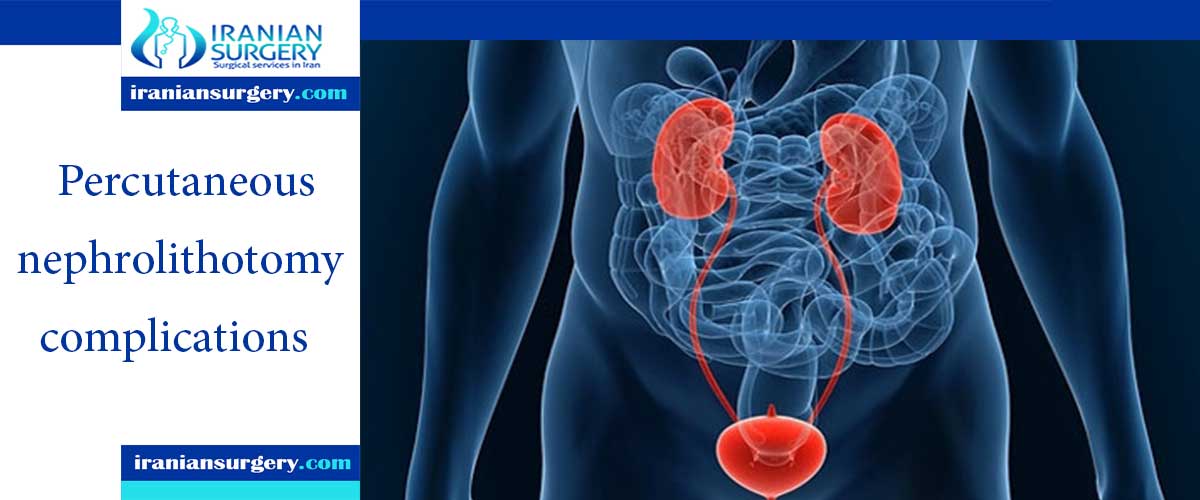percutaneous nephrolithotomy complications

percutaneous nephrolithotomy complications
what are percutaneous nephrolithotomy risks ?
Most procedures have possible side-effects. But, although the complications listed below are well recognised, most patients do not suffer any problems.
- Problems relating to the anaesthetic: such as a chest infection. More information about anaesthetic and the risks associated with it is included in the leaflet Having an anaesthetic. If you do not have a copy, please ask us for one.
- Problems relating to the surgery: deep vein thrombosis or DVT (blood clot in the legs), a pulmonary embolus (blood clot in the lung), stroke or heart attack.
- Bleeding: in or around the kidney. Some bleeding is normal; rarely it may be significant enough to require a blood transfusion (in less than five out of every 100 patients). If the bleeding does not stop, you may need an angiogram to block the blood vessel that is bleeding
- Infection: because some stones have bacteria trapped within them, we give you antibiotics routinely to prevent infection after the operation.
- Bowel perforation: there is a possibility of damaging the bowel during the operation. However, this is rare and happens in less than one out of every 100 patients.
- Injury to the lung cavity: there is a small chance of pockets of air or fluids forming around a lung if the needle is inserted toward the upper portion of the kidney (this will have been decided by your surgeon depending on where the stones are). These pockets are treated with a chest tube, which allows the fluid to drain from around the lung.
- Fluid build-up: sometimes urine can leak from the kidney, resulting in a small collection of fluid inside the abdomen (tummy). If this becomes a large collection, it may need draining which is usually done in the x-ray department.
- Retained fragments: sometimes not all the stones are removed and these may need further treatment. Rarely, a stent is inserted during the procedure and left in place. If it has a string attached, it is removed within 24 to 48 hours; if it does not have a string attached, it can be removed within six weeks
10 common questions about percutaneous nephrolithotomy
1What is the recovery time for percutaneous nephrolithotomy?
You may stay in the hospital for one or two days after the procedure. Your doctor will recommend that you avoid heavy lifting, and pushing or pulling for two to four weeks. You may be able to return to work after a week
2How is percutaneous nephrolithotomy done?
It is inserted through your back or flank. Percutaneous nephrostolithotomy (or nephrolithotomy) is the passing of a special medical instrument through your skin into your kidney. This is done to remove kidney stones. Most stones pass out of the body on their own through urine.
3Is Pcnl an outpatient procedure?
PCNL can be safely performed with excellent outcomes as an outpatient procedure.
4Is Pcnl dangerous?
PCNL is a safe and effective procedure for removing large, complex, and/or multiple renal calculi. However, a dangerous and life-threatening complication that can occur during or after PCNL is bleeding, which can occur during needle passage, tract dilatation, or nephrostomy.
5Is Pcnl surgery painful?
Post-operative pain: Following surgery, pain in the flank area overlying your kidney is common for the first few days, but well controlled with intravenous or oral pain medication provided to you on request by your nurse. Nephrostomy Tube: A nephrostomy tube drains urine directly from your kidney into a drainage bag.
6Is Pcnl major surgery?
Currently, PCNL is the procedure of choice for managing kidney stones and continues to evolve and has largely replaced open stone surgery. ... Standard PCNL. The procedure is performed with the patient in prone position
7Is a 5 cm kidney stone big?
The smaller the kidney stone, the more likely it will pass on its own. If it is smaller than 5 mm (1/5 inch), there is a 90% chance it will pass without further intervention. ... If a stone is too large to pass on its own, several treatment options are available
8How is Pcnl performed?
Percutaneous nephrolithotomy (PCNL) is a minimally-invasive procedure to remove stones from the kidney by a small puncture wound (up to about 1 cm) through the skin. It is most suitable to remove stones of more than 2 cm in size and which are present near the pelvic region.
9Do you still pee with a nephrostomy tube?
The nephrostomy drains urine from one or both kidneys into a collecting bag outside your body. The bag has a tap so you can empty it. You may still pass some urine in a normal way even when you have a nephrostomy tube in one, or both, of your kidneys
10How long does a Pcnl take?
three to four hours
Typically, the length of the surgery is three to four hours. The surgery is performed by making a small 1 cm incision in the patient's flank area (Figure 1). A tube is placed through the incision into the kidney under x-ray guidance.
[kkstarratings]


